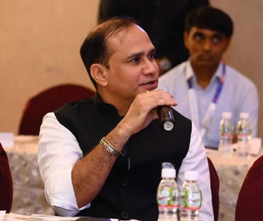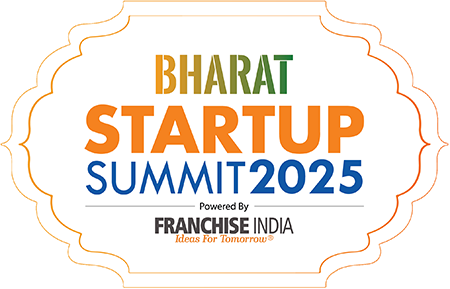 09:00 –
10:00 AM
09:00 –
10:00 AM
 10:10 – 10:30
AM
10:10 – 10:30
AM
 10:30 – 11:15
AM
10:30 – 11:15
AMHighlights
Gujarat’s ICE-to-EV transition policy success—auto clusters shifting to EVs
Role of Tata Motors, MG Motor India, and others in localizing EV supply chains
Case examples from Surat, Vadodara, and Rajkot for last-mile EV adoption
Role of GEDA, industries department, and municipal corporations
Boosting consumer confidence through localized success stories and infra rollouts
 11:15 –
12:00 PM
11:15 –
12:00 PMHighlights
Gujarat’s e-highways and charging infra rollout via PPP model
Learnings from Gujarat’s first intercity EV charging corridor (e.g., Ahmedabad to Kevadia)
Opportunities for private players to scale charging in tourist zones, industrial parks
Battery swapping pilots in Surat and Ahmedabad
GUVNL’s smart grid and DISCOM readiness for load balancing


 12:00 PM –
12:30 PM
12:00 PM –
12:30 PM


 12:30 – 1:15
PM
12:30 – 1:15
PMHighlights:
Gujarat as the hub for battery and ACC investments (Dholera SIR, Sanand)
State support under PLI and Gujarat’s own subsidy scheme
Supply chain access via ports—Kandla, Mundra—for raw material imports
Gujarat’s startup presence in BMS, recycling, and battery testing
Linking battery ecosystem to solar and stationary storage for agriculture/rural areas
 1:15 - 2:15 PM
1:15 - 2:15 PM 2:15 - 2:30 PM
2:15 - 2:30 PM 02:30 – 03:15 PM
02:30 – 03:15 PMHighlights:
How to deal with high upfront investment and often have long gestation periods before returns materialize
Rapid innovation in battery chemistry, vehicle platforms, and software poses a risk of backing the “wrong tech.”
EV adoption is highly sensitive to government subsidies and regulatory mandates. Policy rollbacks or delays in emission norms can significantly impact ROI for both banks and VCs.
Lack of Scalable Business Models: While many EV startups emerge, few demonstrate scalable, profitable models
For banks, underwriting EV loans is complex due to lack of historical default data, uncertain residual values, and evolving battery life/degradation risks.
 3:15 - 3:45 PM
3:15 - 3:45 PM 3:45 - 4:30 PM
3:45 - 4:30 PMHighlights:
Startups are turning Gujarat into India’s EV innovation lab — not just a factory floor.
Young founders are solving real EV problems: cost, charging, and scale — faster than legacy players.
From two-wheelers to truck fleets, local startups are redefining what “Made in Gujarat” means for mobility.
Government support helps, but it’s hustle, hardware, and high-risk thinking that’s driving the revolution.
The next Ola Electric or Tesla may just come from Ahmedabad — the ecosystem is ready, are we?
 10:30 – 10:45
AM
10:30 – 10:45
AM
 10:45
–
11:30 AM
10:45
–
11:30 AMModerator:

Speakers:


 11:30 AM
–
12:15 PM
11:30 AM
–
12:15 PMModerator:

Speakers:


 12:15 – 01:00
PM
12:15 – 01:00
PM
Moderator:

Speakers:




 01:00 –
02:00 PM
01:00 –
02:00 PM
 02:00 – 02:45
PM
02:00 – 02:45
PM
Moderator:

Speakers:



 02:45 PM -
03:30
PM
02:45 PM -
03:30
PM
Moderator:

Speakers:




 03:30 PM - 04:15 PM
03:30 PM - 04:15 PM
Moderator:

Speakers:



